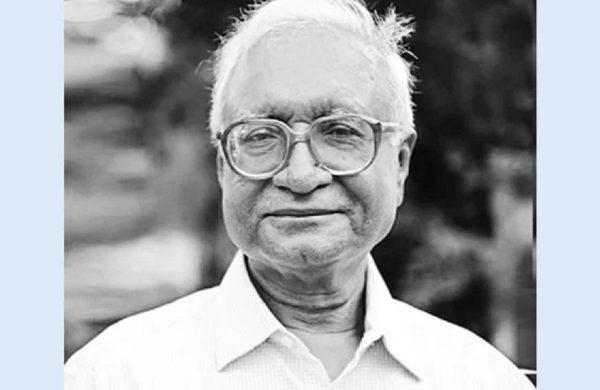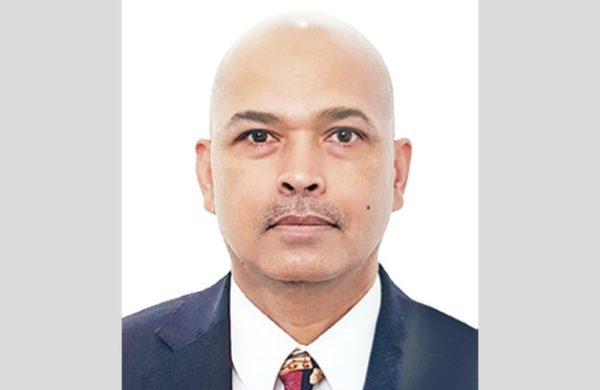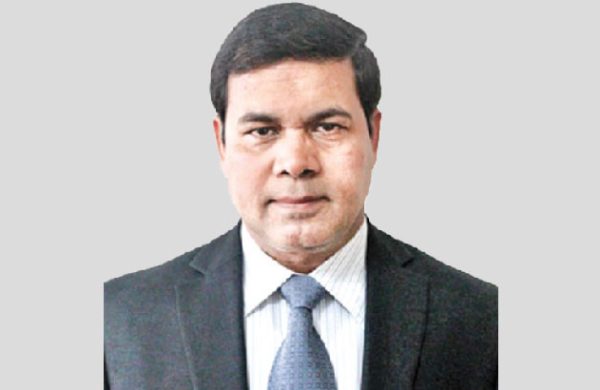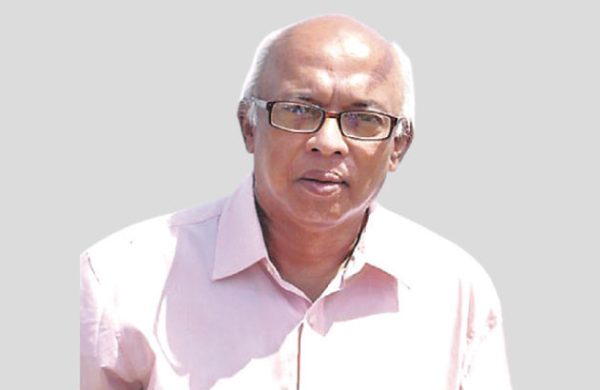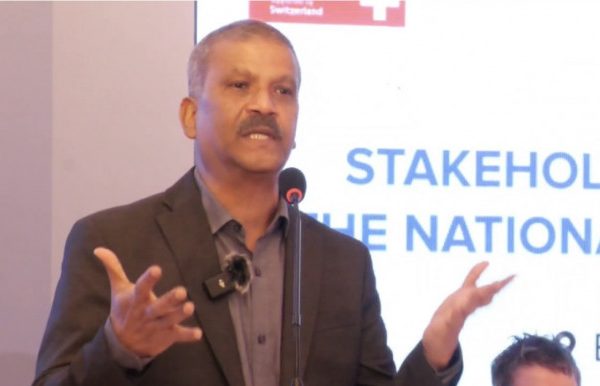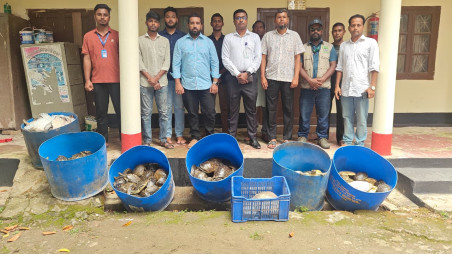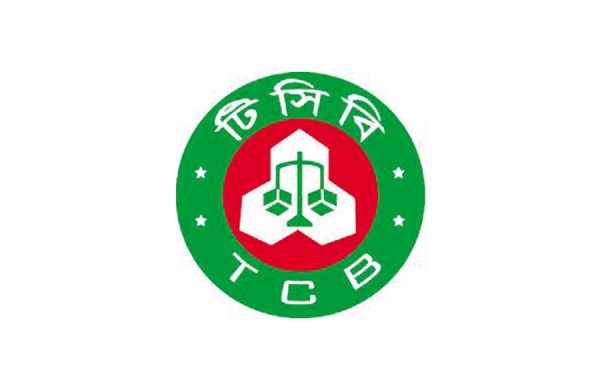Prevention of monkeypox infection requires precautions
- Update Time : Friday, August 16, 2024
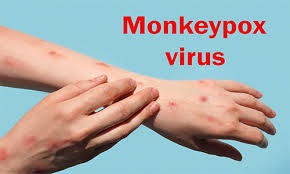
–Dr Muhammad Mahtab Hossain Mazed–
Monkeypox is a rare and little-known disease. Like the COVID-19 pandemic, panic has arisen around the world due to this new virus. Bangladesh is not exempt from this concern, as people from countries that have already seen cases of monkeypox are arriving almost every day. Therefore, the government should take special precautionary measures as soon as possible at all airports and land ports of the country, including Dhaka, regarding monkeypox. The World Health Organization (WHO) has declared a global public health emergency due to concern over the spread of monkeypox in different parts of Africa.
This highly contagious disease was formerly known as monkeypox. At least 450 people died in its initial outbreak in the Democratic Republic of Congo.
Monkeypox has now spread to parts of Central and East Africa. Scientists are concerned about the rapid spread of a new form of the disease and its high mortality rate.
The symptoms of this disease are similar to flu. It causes skin lesions and can be fatal. Four out of 100 infected people may die.
There are two main types of monkeypox-clade 1 and clade 2. Earlier, in 2022, the health organization declared a health emergency due to monkeypox. This emergency was issued for relatively mild infections of clade 2 types. However, more lethal clade 1 infections are now being seen. In the past, the death rate among such infected people was up to 10 percent. Now, the death rate is also increasing.
Around September last year, the monkeypox virus mutated. The new species created by this transformation is named clade 1b. Since then, it has been spreading rapidly. It has been described by one scientist as ‘the most dangerous ever.’
Since the beginning of this year, more than 13,700 cases of monkeypox have been reported in the Democratic Republic of Congo. At least 450 people died. Later, the disease was detected in several other African countries, including Burundi, the Central African Republic, Kenya, and Rwanda.
Early symptoms of monkeypox include fever, headache, sweating, back pain, muscle tension, and fatigue. When the fever subsides, a rash appears on the body. In most cases, a rash appears at the beginning and later spreads to other parts, especially the palms of the hands and the soles of the feet.
World Health Organization monkeypox expert Lewis said 99 percent of those infected outside the African continent are men. Ninety-five percent of them have sex only with men. The World Health Organization has asked gay and bisexual men to be careful.
Lewis’s words are not the last. It is not yet clear why monkeypox is more common in younger gay and bisexual men. The picture is not yet clear about how it is spreading through whom. Rather, the incidence of infection appears to be unrelated. Maybe homosexuals are more aware of their sexual health than others, so they are the ones coming to the doctor.
This disease can spread in many other ways. Two children contracted the disease after using the towels of people infected with monkeypox. The recent cases of infection in the UK have not yet been linked. The infection occurred within the UK. A health worker has been infected there. He attended to monkeypox patients.
Campaigning against monkeypox may or may not succeed if it is promoted as just a gay problem without clear evidence. People will hide the disease for fear of being identified as gay.
Gradually, the wound deepens and spreads throughout the body. Because the symptoms of monkeypox are similar to smallpox or chickenpox, many people mistake this disease for chickenpox at the initial stage.
Monkeypox is often mistaken for chickenpox. Similar to chickenpox, monkeypox also causes small rashes on the body. In the case of chickenpox, the body will have red bumps or rashes. This is also the case with monkeypox. Monkeypox is similar to chickenpox in symptoms such as body ache and fever.
The chickenpox virus causes rashes on the body within 5-7 days after entering the body. It gradually takes the form of a watery blister. Later, the fluid inside the blister thickens and becomes pus. It starts drying after 7-10 days.
On the other hand, the incubation period of monkeypox can range from 5-21 days. Within 1-3 days (sometimes longer) of the onset of fever, the patient develops a rash, which often starts in the face and then spreads to other parts of the body. Monkeypox can take 2-4 weeks to heal.
These fluid-filled rashes also cause skin scarring. Although symptomatically similar, the main difference between the symptoms of chickenpox and monkeypox is that monkeypox causes swelling of the lymph nodes (lymphadenopathy). However, chickenpox does not cause this problem.
A lymph node is an ovary- or kidney-shaped organ. It is part of the lymphatic system and adaptive immune system. Lymph nodes are widely distributed throughout the body. When the monkeypox virus enters the body, the lymph nodes swell.
Although there is a cure for diseases like chickenpox in allopathy, there is still no specific treatment method to cure this rare disease, experts say. In Africa, monkeypox is reported to kill 1 in 10 people.
The patient is treated not by an experienced doctor. According to Hahnemann’s homeopathic principles, treatment of any complex and difficult disease, including monkeypox, can be effectively addressed if treated according to the individual’s individuality, vivid symptoms, and metabolic processes. There is no such thing as eternal truth in medical science. Because once we used to hear that there was no cure for tuberculosis, now we hear that tuberculosis is manageable. All this is the result of progress and development in science. Various diseases are treated with popular homeopathic methods. Homeopathic treatment involves selecting medicines based on overall symptoms. It is the only medical procedure that removes all the signs and symptoms of the patient’s suffering and restores them to full health. According to BBC News 2016 data, about 40 percent of patients in the country are cured by receiving homeopathic treatment.
The first medicines that can be used for monkeypox based on the symptoms are Rastox, Sarsenia purpurea, Bryonia, Vaccinum, Malandrinum, Pulsatilla, Antimonium Crudum, Sulphur, Thuja, Variolinum, Mercurius Solubilis, Silicea, and many others. If you want to get proper treatment, consult an experienced physician rather than using these remedies yourself.
Finally, there is no cure for monkeypox. However, like any virus outbreak, it can be prevented by taking precautionary measures. There is no specific vaccine for it. However, the monkeypox virus is similar to the smallpox virus. As a result, smallpox vaccination can provide 85 percent protection against monkeypox. As the disease is generally not fatal, experts say there is little reason to worry about it.
(The writer is Founder and Chairman, Jatiya Rogi Kallyan Society)


